|
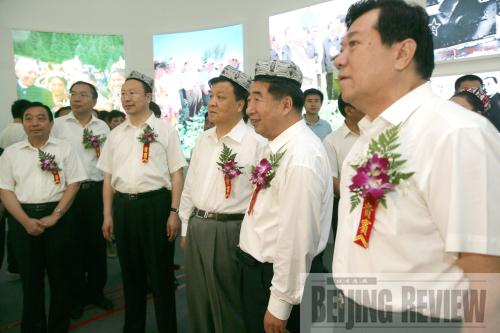 |
|
HIGH-LEVEL ATTENTION: Chinese Vice Premier Hui Liangyu (second from right) visits an exhibition on social progress in China's five autonomous regions after attending its opening ceremony on August 25 (WANG XIANG) |
An exhibition on social progress in China's five autonomous regions, including Inner Mongolia, Xinjiang, Guangxi, Ningxia and Tibet, opened at the Cultural Palace of Nationalities in Beijing on August 25. It runs until September 17.
The one-month exhibition, showcasing the economic, political, cultural, social and ecological developments in the five regions, is part of China's celebrations for the upcoming 60th anniversary of the founding of the People's Republic on October 1.
"I am pleased to see all these photos on Tibet. It feels like going back home again," said 21-year-old dancer Zholma, who comes from Tibet and has been working in Beijing for one year. After recognizing two relatives in exhibition photos—her uncle leaving his village clinic after a day's work and her cousin, a radio anchor working in a broadcast studio—she excitedly told her colleagues.
The photographs, videos, three-dimensional maps and sculptures on display carry facts and figures that prove the strong and growing momentum in the five regions. In the exhibit on Ningxia, which became an autonomous region in 1958, one photo caption said that Ningxia led all provinces and autonomous regions in China to extend broadband Internet services to every township in 2006. In Xinjiang's exhibition hall, a board on traffic infrastructure revealed that the largest autonomous region, which covers one sixth of China's land territory, has 12 airports and the largest number of air routes among all provinces and autonomous regions.
Ma Hangong, a Ningxia ethnic affairs official who is in charge of that region's exhibition, said a highlight of Ningxia's entry is the display on the Hui ethnic group's garments, dances and wedding ceremonies. Visitors see Hui culture in photos and through real people, like the guides who are all dressed in traditional Hui clothing. The region is also displaying plans at the exhibition showing how it hopes to become an international production center for Halal foods.
Chinese Vice Premier Hui Liangyu announced the exhibition's opening at a ceremony on August 25. Speaking at the ceremony, Liu Yunshan, head of the Publicity Department of the Central Committee of Communist Party of China (CPC), said the exhibition uses rich materials in various media to illustrate the five regions' achievements in economic growth, cultural activities and environmental protection. Liu also said different ethnic groups in these regions have enjoyed substantial improvement in their living standards thanks to the Central Government's long-term attention and support as well as the regional ethnic autonomy system. He said that China's ethnic policies have proved themselves correct and successful.
In 2008, the annual economic growth rates of Guangxi, Tibet and Inner Mongolia were 12.8 percent, 10.1 percent and 17.2 percent, respectively. These increases were all higher than the national average growth rate of 9 percent in 2008. China's oldest autonomous region, Inner Mongolia, which was founded in 1947, has been enjoying the fastest economic growth in the country for the last seven years.
Exhibition staff also sells ethnic food, handcrafted key rings and home decorations.
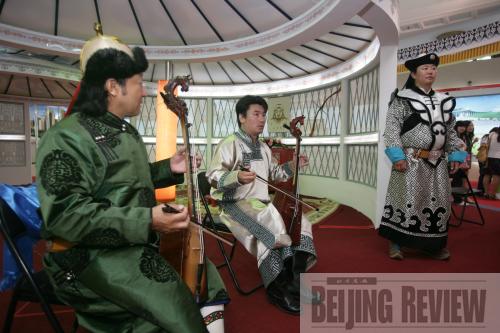 |
|
FOLK SONGS: A Mongolian band performs in Beijing on August 25 at the exhibition on social progress in China's five autonomous regions (WANG XIANG) |
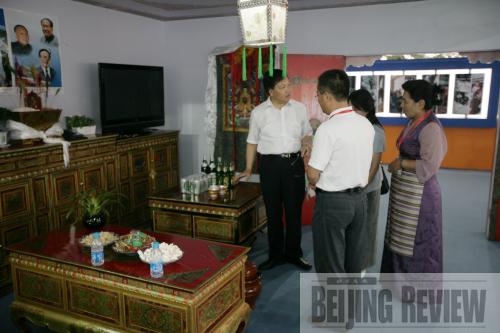 |
|
TIBETAN HOME: A model of a traditional Tibetan family home is set up at the exhibition to let visitors learn more about Tibetan culture (WANG XIANG) |
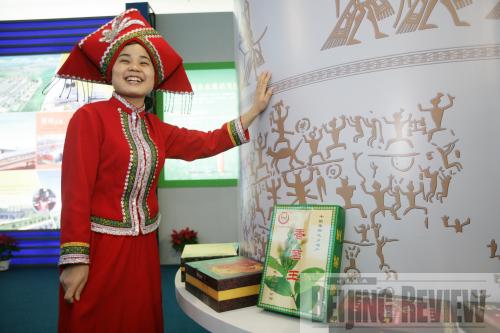 |
|
ANCIENT WISDOM: At the Guangxi Zhuang Autonomous Region exhibition, a Zhuang visitor takes a photo with pictogram characters her ancestors used thousands of years ago (WANG XIANG) |
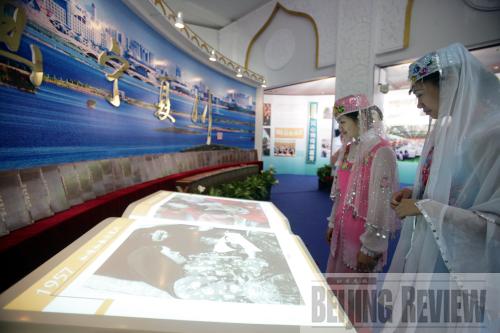 |
|
OBSERVING CHANGE: Visitors in traditional Hui garments look at photos showing the improvement in living standards seen in Ningxia Hui Autonomous Region over the past five decades (WANG XIANG) |
|
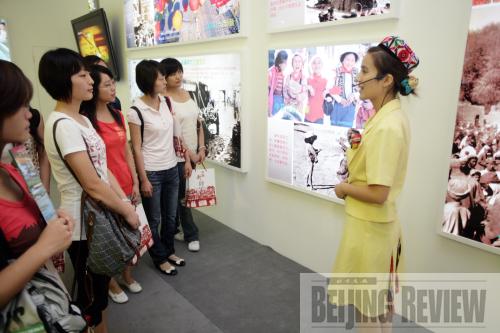 |
|
BETTER LIFE: A Uygur guide explains photos documenting Xinjiang Uygur Autonomous Region's changes over the last few decades at the exhibition on social progress in China's five autonomous regions (WANG XIANG) |
|
